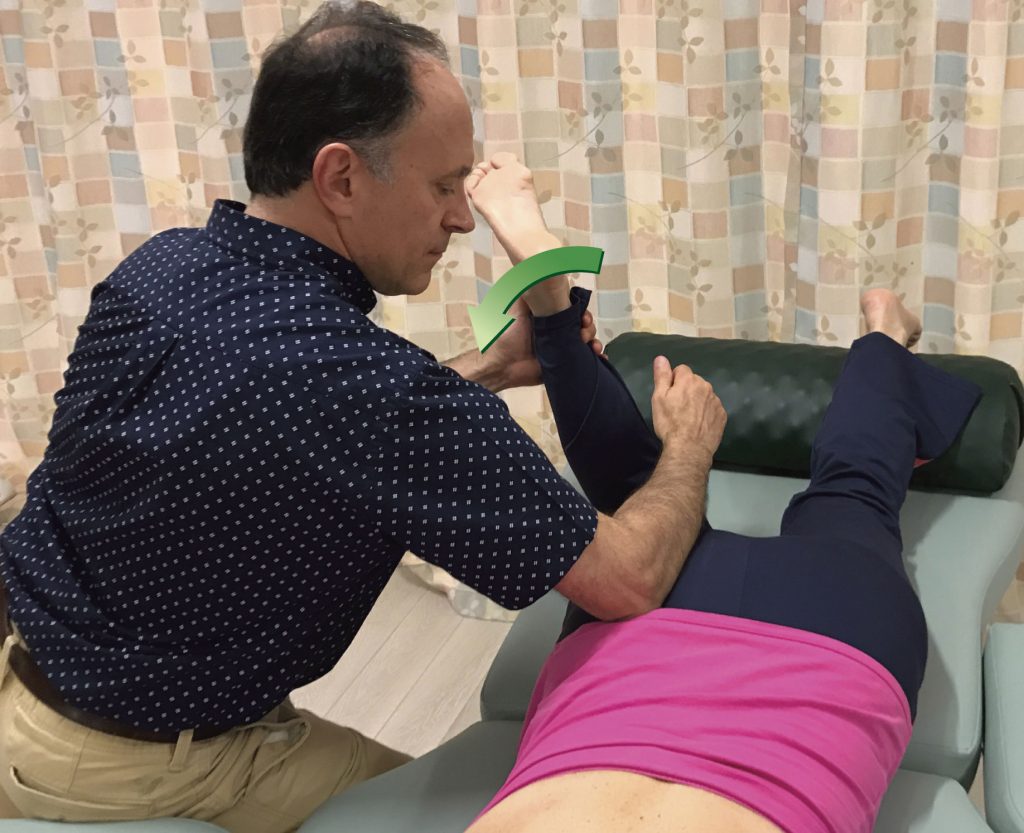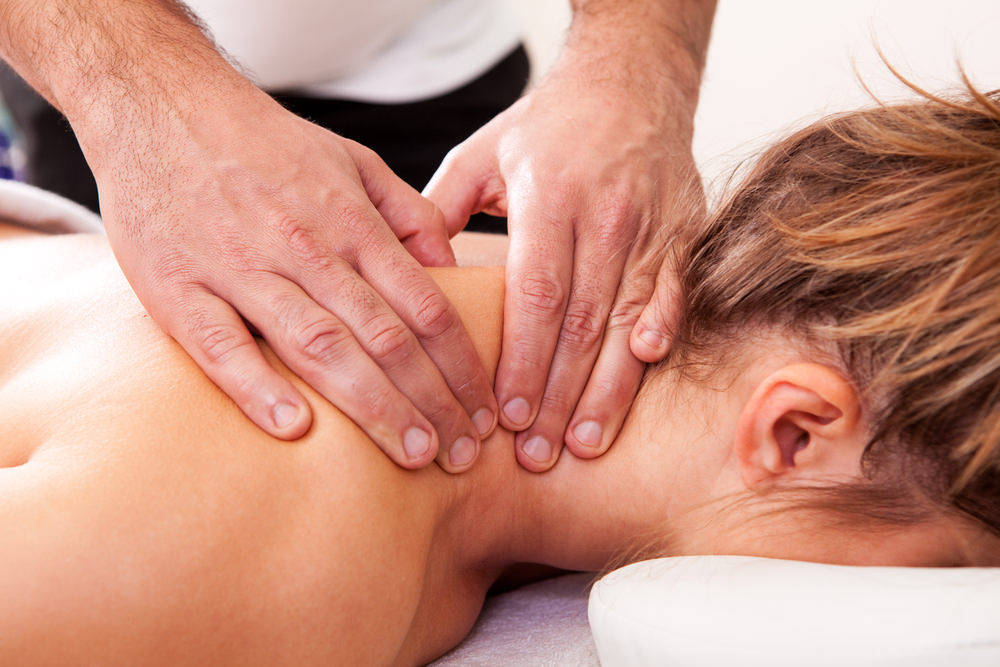Massage and Post-Exercise Recovery

Pin and Stretch Technique for the piriformis. Permission Joseph E. Muscolino.
Massage as a post-exercise recovery for athletes is not new. And new scientific findings seem to support the use of massage as a post-exercise therapy, according to Thomas Best from University of Miami and Scott Crawford from University of Nebraska in an editorial published in the October 2016 issue of British Journal of Sports Medicine.
Physiological Mechanisms…
The scientific literature on post-exercise massage in the last decade has provided a plausible biological explanation. Clinical studies have shown that massage mediates leucocyte migration and lessens the inflammatory response to exercise, as well as decreases pain, muscle tone, and hyperactivity. Research studies have also shown that massage mediates molecular processes linked to inflammation, specifically by decreasing nuclear factor κβ (NF-κβ), various pro-inflammatory cytokines, and tumour necrosis factor-α. The demargination (process of neutrophils entering the peripheral circulation or circulating pool from marginating pools) of leucocytes is hypothesised due to increased peripheral blood flow and blood perfusion.
Studies Show That…
Animal studies showed significant improvements in peak isometric torque recovery from intense eccentric exercise following four consecutive days of massage. It has also been shown that massage initiated immediately after exercise and massage performed 48 hours after exercise were both effective in reducing muscle edema and decreasing the number of damaged muscle fibers, compared to exercised, non-massaged controls.
These investigations suggest that the reduction in inflammatory cells and pro-inflammatory cytokines by massage can mitigate secondary injury associated with intense exercise, thereby reducing tissue damage and accelerating recovery.
Digital COMT
Did you know that Digital COMT (Digital Clinical Orthopedic Manual Therapy), Dr. Joe Muscolino’s continuing education video streaming subscription service for massage therapists (and all manual therapists and movement professionals), has at present (December of 2018) more than 1,000 video lessons on manual therapy continuing education, including entire folders on massage therapy, stretching, and joint mobilization. And we add seven (7) new videos lessons each and every week! And nothing ever goes away. There are also folders on Pathomechanics and Anatomy and Physiology, including an entire folder on Cadaver Anatomy… and many, many more on other manual and movement therapy assessment and treatment techniques? Click here for more information.
Studies have also shown that shorter sessions of massage (5–12 minutes) were most beneficial in improving performance measures. Whereas other animal studies have shown no difference between the recovery of muscle active properties when the length of the massage session was between 15 and 30 minutes.
Moreover, post-exercise massage might be more beneficial in acute short-term recovery with greater benefits found 5–10 minutes after post-exercise massage compared to 1–6 after post-exercise massage. This hypothesis is consistent with animal studies showing that the sustained effects of massage on the reduction of tissue stiffness over multiple days were not as great compared to the immediate effects directly after the massage.

More Research Needed
Although there appears to be increasing evidence that molecular changes occur within skeletal muscle following massage, the effects of these changes on clinical markers of performance are less clear. The effects of multiple bouts of massage, either daily or at regular intervals over the course of an athletic season, still need further investigation. In addition, the training level of the athlete may also play a role in determining the effectiveness of post-exercise massage as a recovery modality.
Comment by Joseph Muscolino
This study describes many of the possible underling mechanisms that explain why massage might be helpful in post-exercise recovery. Being able to explain the physiological mechanisms that underlie massage as an effective manual therapy is extremely important toward understanding how massage helps heal the human body. A number of studies are also cited that show the effectiveness of massage as a post-exercise recovery tool. This is valuable for all people who look toward evidence-based proof for the efficacy of administering any type of physical rehab program. Armed with both the underlying physiology as well as the evidence-based studies, the profession of massage should be able to position itself to increase its presence in collegiate and professional athletic programs as a indispensable part of a sports health and fitness team.
This blog post article was created in collaboration with www.terrarosa.com.
(Click here for the blog post article: Post Exercise Massage and Muscle Stiffness.)
Digital COMT
Did you know that Digital COMT (Digital Clinical Orthopedic Manual Therapy), Dr. Joe Muscolino’s continuing education video streaming subscription service for massage therapists (and all manual therapists and movement professionals), has at present (December of 2018) more than 1,000 video lessons on manual therapy continuing education, including entire folders on massage therapy, stretching, and joint mobilization. And we add seven (7) new videos lessons each and every week! And nothing ever goes away. There are also folders on Pathomechanics and Anatomy and Physiology, including an entire folder on Cadaver Anatomy… and many, many more on other manual and movement therapy assessment and treatment techniques? Click here for more information.

